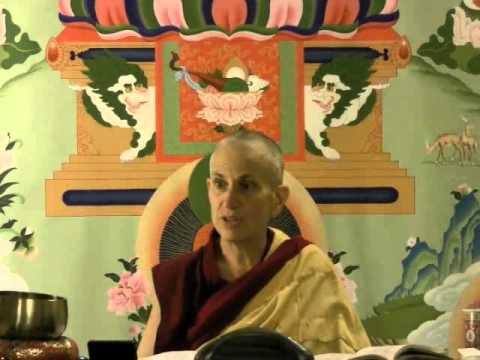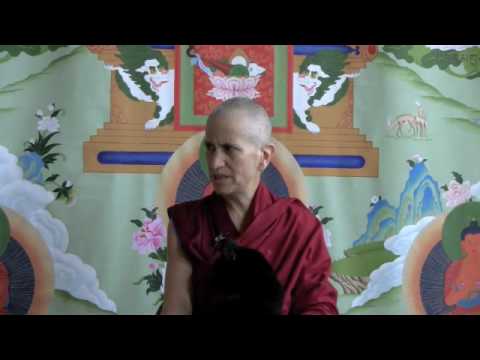Tara’s qualities
Part of a series of Bodhisattva's Breakfast Corner talks given during the Green Tara Winter Retreat from December 2009 to March 2010.
- How to reflect on Tara’s qualities
- How to view the physical manifestations of Tara as signs of the mental qualities of a Buddha
Green Tara Retreat 005: Tara’s qualities (download)
We have talked about seeing Tara as somebody who was a living being. We have talked about her being someone who practiced the path and became a Buddha. We have talked about how reflecting on her in that way can be very inspiring for us in gaining the confidence that we, too, can become a Buddha.
Another way of thinking of Tara is as a manifestation of the Buddha’s qualities. Here we focus more on the qualities of a Buddha. We focus on love and compassion, the six far-reaching practices, and the various qualities of a Buddha’s body, speech and mind. You could do a long meditation on those qualities. It’s very, very helpful for your refuge practice, and for knowing where you want to go in your life, when we say “I want to become a Buddha.”
By reflecting on those qualities we then see Tara as a physical manifestation of those qualities. This is much in the same way that an artist may have certain feelings and expresses them in a painting, or a musician has certain mental qualities that get expressed in the music. Here, in Tara, are enlightened qualities that take a physical manifestation; even though they, themselves, are not physical. This is because they are mental qualities.
This is one way in which the Buddha communicates with us. We are beings in the desire realm where we have these gross bodies. We are very attracted to form and color and shape and so on. By the Buddhas appearing to us in those different aspects it gives us an idea of their qualities.
Here you can really reflect on how you feel. Reflecting on Tara’s green color: green and growth and success and everything like that—which gives you a certain feeling. Reflecting on her body position: with the left leg tucked in, showing that she controls the inner energies; her left hand in the refuge position and with the lotus at the heart; her right foot stepping out into samsara to be of help; and her right hand on her knee in the gesture of giving as if she is pulling us out of samsara, and so on. We can think of these physical qualities, and what she looks like as indicative of the mental qualities of a Buddha.
This involves a very different way of thinking. Here we aren’t thinking of Tara so much as a person but as a manifestation of qualities. That’s also going to help us in not thinking so much of ourselves as a truly existent person either. Try that sometimes when you’re meditating on Tara—as seeing her as simply a physical appearance of these qualities. Then you can really also see how the physical appearance impacts your mind and helps you in your practice.
Venerable Thubten Chodron
Venerable Chodron emphasizes the practical application of Buddha’s teachings in our daily lives and is especially skilled at explaining them in ways easily understood and practiced by Westerners. She is well known for her warm, humorous, and lucid teachings. She was ordained as a Buddhist nun in 1977 by Kyabje Ling Rinpoche in Dharamsala, India, and in 1986 she received bhikshuni (full) ordination in Taiwan. Read her full bio.


